The Real Observatorio de Madrid is a scientific institution which was created at the end of the XXVIII century for the study of astronomy. King Carlos III, had this building constructed mainly because Spain had an impressive navy which had to be controlled through astronomy. When we visit the Real Observatorio de Madrid, we can see first hand the fascinating instruments which were used, three centuries ago, to study astronomy and navigation.
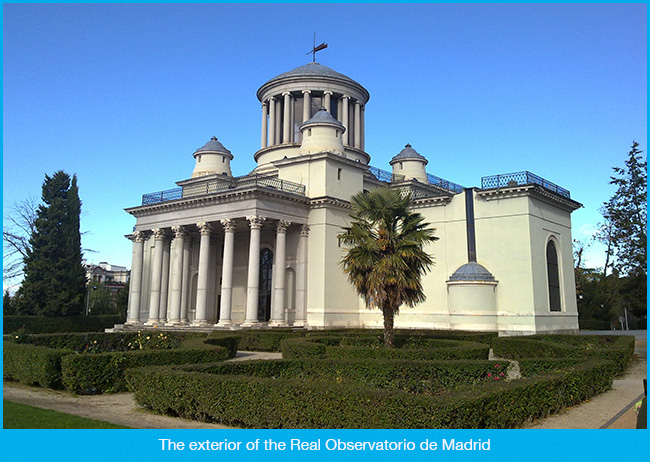
This building is excellently located, in the very centre of Parque del Retiro next to the statue of the Ángel Caído. This enables it to have many visitors who enjoy seeing and admiring the different halls and the scientific instruments. Nevertheless, the observatory is one of the least exploited parts of the Retiro. Precisely because of this, we suggest that you should visit it because it is not crowded and therefore you can view it at your leisure. If you take a walk around the Retiro, you can end it going to the observatory. This can be a fantastic afternoon plan. We must point out that in order to visit it, registration is required. This can be formalized at this page. Today, we will write about the Real Observatorio de Madrid in our section Places with a lot of History. In this section, we previously wrote about the magnificent Casa Gallardo.
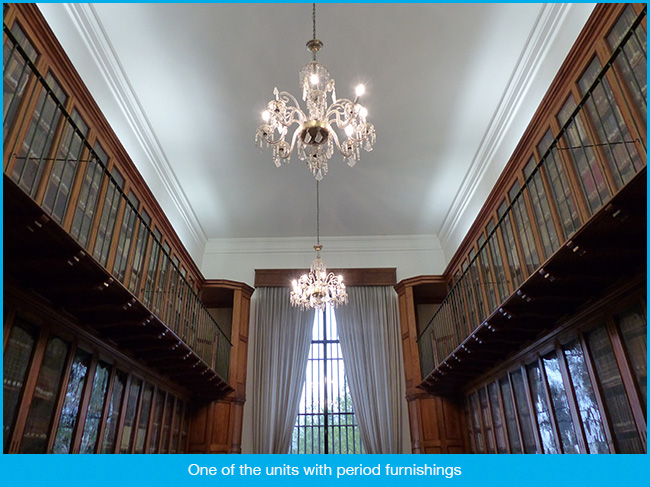
A TEMPLE OF ASTRONOMY
The Real Observatorio de Madrid is located in 3, Alfonso XIII Street. It stands on a small hill called San Blas in the gardens of Parque del Retiro. The observatory was designed by Juan de Villanueva in 1790. It was then built far from the city because in those days the San Blas small hill was located in the outskirts of Madrid. When this scientific institution was created, it was inspired by different European observatories as in Spain there had hardly been a tradition of astronomy.
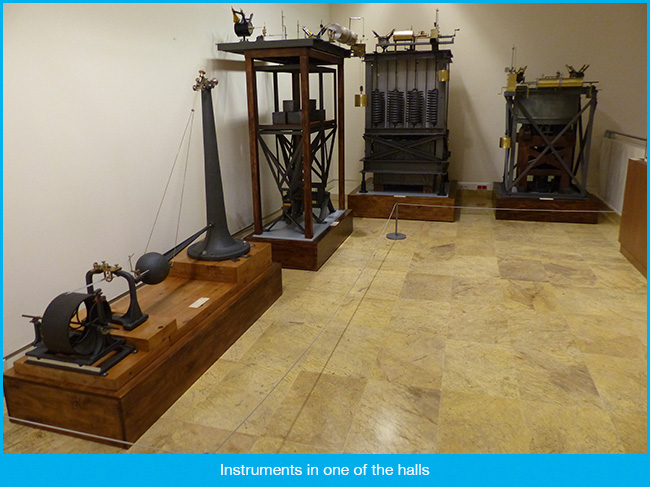
What activity was carried out in the Real Observatorio de Madrid? We should ask ourselves which activity was not done there, as the number of activities are innumerable. In order to sum up, everything that comprised astronomy took place in the observatory: solar physics, stellar physics, geodetic applications, celestial mechanics and even meteorology. In the XX century, it was decided that the observatory would be exclusively dedicated to the research of astronomy and to the development of instrumentation.
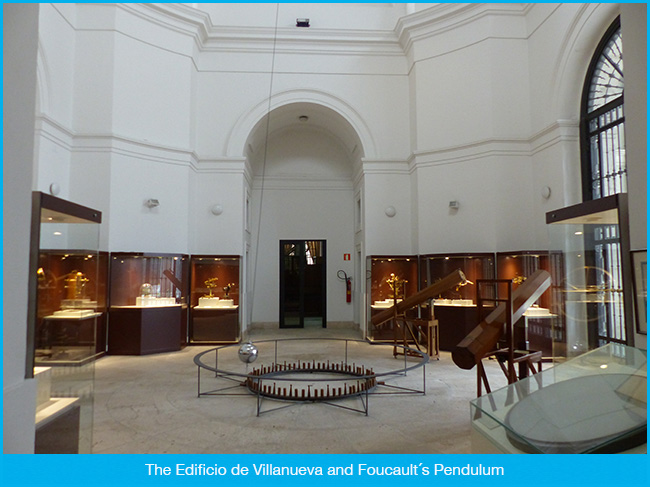
A GREAT MANY UNITS
It is impossible to write about everything which is inside the Real Observatorio de Madrid in only a single article. The observatory has several buildings and each of them has a great many units as well as different instrumentation related to astronomy. However, we will say that the main part is Edificio de Villanueva where we must highlight Foucault´s Pendulum which shows the movement of the rotation of the earth in a steel sphere that weighs more than 100 kgs.
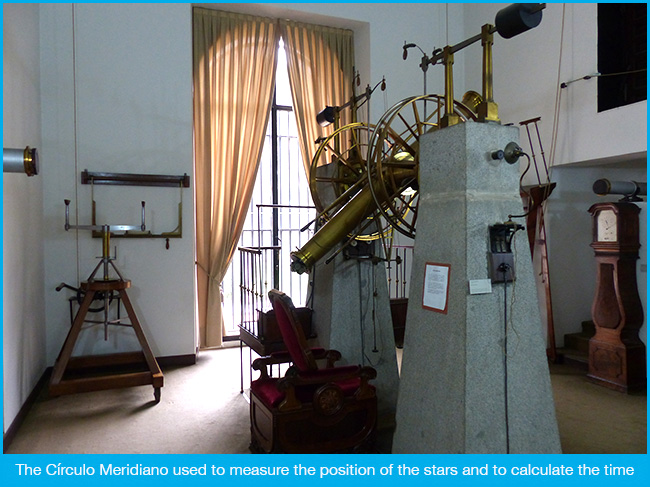
We also recommend seeing the two 1796 telescopes and the Sala del Círculo Meridiano where one of the most important instruments of the observatory is exhibited. This golden instrument measures the position of the stars and it also calculates the time. We also want to mention the magnificent library as well as the Edificio Gran Ecuatorial, the Pabellón del Astrógrafo, the Pabellón del Sol and the Sala de Ciencias de la Tierra y del Universo. Lastly, we must note Herschel´s Telescope which is regarded as the crown jewel, even though it is a copy made in 2004. Even so, it is really worthwhile seeing as it is amazing.
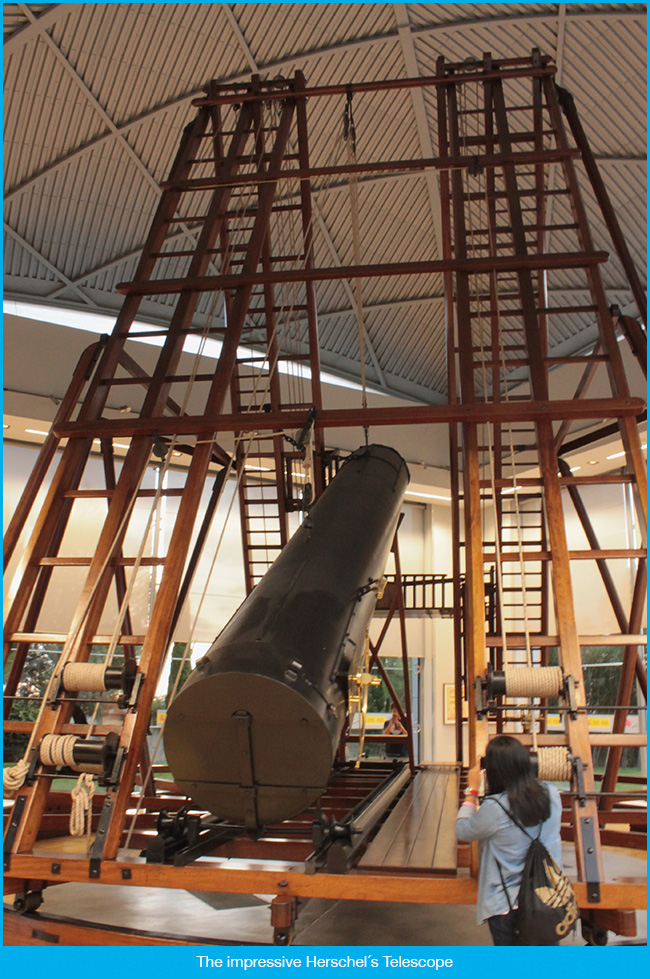
DID YOU KNOW THAT…?
In 1808, the French army almost completely destroyed the Real Observatorio de Madrid. This happened because it was used as an arsenal during the Peninsular War. Some books and important telescopes, such as Herschel´s Telescope, were burnt. Fortunately, some instruments were saved and they are currently exhibited in the observatory.
Picture 01: Fanattiq
Rest of pictures: Luis García



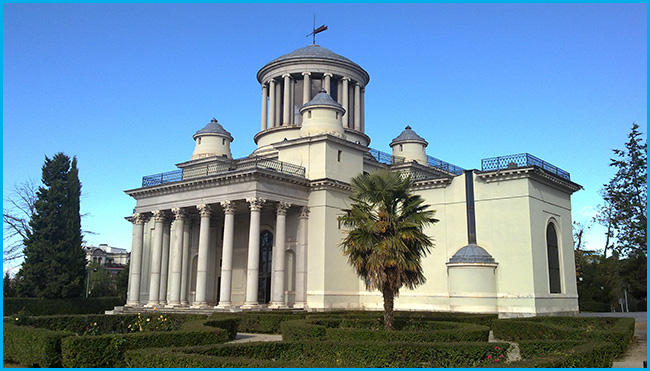
 Spanish
Spanish English
English
Comments
Pingback: The National Anthropology Museum - Blog, dulce blog